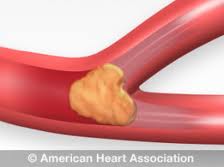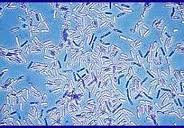Archive for Uncategorized
Mini Stroke
Posted by: | Comments Transient Ischemic Attack or TIA’s can be described as a mini-stroke. While a TIA does not necessarily cause serious damage to the brain, it is a serious “brain attack”. TIA’s look just like a regular stroke except that the symptoms disappear in less than 24 hours and many times the symptoms last less than an 1 hour. These mini-strokes take place when the blood flow to the brain is temporarily interrupted. Most TIA’s are due to a blood clot which either frees it’s self or dissolves before permanent brain death takes place. Left untreated the possibility of suffering a major stroke is increased by 80%.
Transient Ischemic Attack or TIA’s can be described as a mini-stroke. While a TIA does not necessarily cause serious damage to the brain, it is a serious “brain attack”. TIA’s look just like a regular stroke except that the symptoms disappear in less than 24 hours and many times the symptoms last less than an 1 hour. These mini-strokes take place when the blood flow to the brain is temporarily interrupted. Most TIA’s are due to a blood clot which either frees it’s self or dissolves before permanent brain death takes place. Left untreated the possibility of suffering a major stroke is increased by 80%.
Some of the symptoms to look for are:
• Numbness, tingling or heaviness.
• Unable to move arms, legs or face especially on one side of the body.
• Double vision, blurriness or unable to see out of one eye.
• Difficulty in speaking.
• Unsteady, dizzy or loss of balance.
Again these symptoms can last less than an hour and many times we dismiss these occurrences as to being tired, under stress or fatigued. If you experience any of these warning signs, see your physician immediately.
Stroke is the 3rd leading cause of death right behind heart attacks and cancer. High blood pressure is the leading cause for strokes. To reduce your risk factors, control your blood pressure. Watch your cholesterol levels. Eat health, exercises and if you smoke, quit.
Know the warning signs and get medical care immediately. Time is a major factor whether it is a Transient Ischemic Attack or a full blown Stroke.
 SANTA CLARA, CA – September 10, 2013 – CPRescue is pleased to announce its continuing training vendor relationship with ARAMARK at the Santa Clara Convention Center. On Tuesday, September 10th, CPRescue provided a Bloodborne Pathogen (BBP) training session for 85 ARAMARK employees. CPRescue has been providing Bloodborne Pathogen training for ARAMARK staff the past three (3) years. OSHA’s Bloodborne Pathogens Standard 29 CFR 1910.1030 requires that training to be completed yearly.
SANTA CLARA, CA – September 10, 2013 – CPRescue is pleased to announce its continuing training vendor relationship with ARAMARK at the Santa Clara Convention Center. On Tuesday, September 10th, CPRescue provided a Bloodborne Pathogen (BBP) training session for 85 ARAMARK employees. CPRescue has been providing Bloodborne Pathogen training for ARAMARK staff the past three (3) years. OSHA’s Bloodborne Pathogens Standard 29 CFR 1910.1030 requires that training to be completed yearly.
Bloodborne Pathogens” means pathogenic microorganisms that are present in human blood and can cause disease in humans. These pathogens include, but not limited to Hepatitis A, Hepatitis B, Hepatitis C, HIV, West Niles Virus, Syphilis and Malaria. Coming into contact with these pathogens (like blood from a cut or open wound), creates the opportunity of transmission. CPRescue’s Bloodborne Pathogen training program teaches employees how to protect themselves when they have a reasonable chance of being exposed to bloodborne pathogens while performing their job duties.
ARAMARK is a leader in professional services, providing award-winning food services, facilities management, and uniform and career apparel to health care institutions, universities and school districts, stadiums and arenas, and businesses around the world. In 2012, FORTUNE magazine again recognized ARAMARK on its list of “World’s Most Admired Companies.” ARAMARK has consistently ranked since 1998 as one of the top three most admired companies in its industry as evaluated by peers and analysts.
CPRescue looks to continue and expand its relationship with ARAMARK by offering and providing health and safety training services.
Established in 1997 in San Jose, CPRescue quickly became a leader as a CPR, first aid, AED and Bloodborne Pathogen training vendor for Corporations, Healthcare Providers (AHA BLS CPR), Hospitality Industry and for licensed Childcare Providers (EMSA approved). CPRescue has now expanded its service area to include the entire state of California. CPRescue provides onsite training classes, and is a Certified Small Business (Lic# 0030191). For additional information, please visit their website at www.cprescue.com, email at info@cprescue.com or call them at 1-888-313-2444.
Debilitating Effects of MRSA
Posted by: | Comments Is there a staph bacterium that is completely incurable? No, but a strain of staph emerged in hospitals that has shown resistance to broad-spectrum antibiotics. This strain could outwit all but the most powerful drugs. Many times if MRSA was not diagnosed early or treatment was delayed, the infection could become fatal. In fact, more people die from MRSA than from AIDS.
Is there a staph bacterium that is completely incurable? No, but a strain of staph emerged in hospitals that has shown resistance to broad-spectrum antibiotics. This strain could outwit all but the most powerful drugs. Many times if MRSA was not diagnosed early or treatment was delayed, the infection could become fatal. In fact, more people die from MRSA than from AIDS.
Staph is a common bacteria which about a third of the population carriers with no ill effects. Most of the time this bacteria is harmless, unless it enters the body through a cut or other wound. Even then it may only cause minor skin problems, but with older adults, young children and people with compromised immune systems, this infection can cause serious problems.
Be aware of the signs or symptoms. Many times MRSA will start out as a small pimple or boil, which can quickly turn into deep and painful abscesses. Immediately see a doctor for treatment. Ask to have any skin infections tested for MRSA before starting antibiotic therapy. Untreated staph could burrow deep into the body and infect bones, the bloodstream and even the heart muscle and lungs.
The best treatment for staph and MRSA strain is prevention. Do not share personnel items, such as towels, sheets, razors or linens. Keep all wounds covered with a sterile bandage until healed. Shower after all athletic events and wash your hands thoroughly several times a day. Careful hand washing is the best defense against all germs.
New Painkiller – Snake Venom
Posted by: | Comments The next big thing in pain relievers may be snake venom. Researchers are suggesting that specific compounds in snake venom may actually be a potent painkiller.
The next big thing in pain relievers may be snake venom. Researchers are suggesting that specific compounds in snake venom may actually be a potent painkiller.
The African Black Mamba is consider to be one of the world’s most deadliest snakes. It can grow up to 14 feet and has been known to have a very aggressive nature. Researchers have begun using the venom of this snake to create a new generation of painkillers that they are currently testing on mice.
This possible new group of pain relievers can be as effect as morphine, but without many of the side-effects you can get from taking morphine.
Researchers are happy with the results and are getting a better understanding about how our pain receptors work, which they hope will lead to even more natural compounds for the reduction or the elimination of pain for patients.
Kiss of Death
Posted by: | Comments Can kissing your lover cause them serious harm? Believe it or not it can become a serious health issue.
Can kissing your lover cause them serious harm? Believe it or not it can become a serious health issue.
Kissing has left some of us weak in the knees, but for this woman it almost cost her her life. In the heat of passion her lover began kissing and sucking on her neck. Commonly referred to as giving a “hickey”. The suction of his “love bit” caused bruising and physical trauma to her blood vessels. A small clot was formed and eventually ended up in her brain, causing her to have a minor stroke.
Having a blood clot develop and move to your brain from giving a hickey is rare, but oddly, injuries during the heat of passion are not all that rare. Strains, fractures, breaks and other injuries have occurred with the recipient delaying medical treatment due to embarrassment. Significant delays in receiving medical assistance can cause further or even permanent disabilities. Please seek immediate medical assistance for all injuries as soon as possible.
Germs, Germs and More Germs
Posted by: | Comments After reading this article you may have wished you didn’t. My wife claims that I have ruined air travel for her for the rest of her life. As the cold and flu season approaches, I thought it may be a good idea identifying some of the most germ ridden areas for both inside and outside of your home. Proper care and precautions can greatly reduce the chance of coming down with a serious infectious disease this season.
After reading this article you may have wished you didn’t. My wife claims that I have ruined air travel for her for the rest of her life. As the cold and flu season approaches, I thought it may be a good idea identifying some of the most germ ridden areas for both inside and outside of your home. Proper care and precautions can greatly reduce the chance of coming down with a serious infectious disease this season.
The following information is not for the squeamish. So if you are brave, hold on as we stroll down germ lane.
Home
This may not come as a surprise to many of you, but the number one worst spot in your home is the kitchen sponge. Over 1.2 billion dangerous germs have been found on a single kitchen sponge. The sponge is quickly followed by the kitchen sink, kitchen counter-top, kitchen floor, telephone and refrigerator door handle. Surprisingly the bathroom toilet bowl has lower levels of germs than many parts of your kitchen. But one thing you may have not considered is the phenomenon of toilet plume. A plume of contaminated water droplets that are ejected into the air every time a toilet is flushed. This bacterial, viral and fecal filled aerosol lands on everything in your bathroom including your toothbrush. Closing the lid before flushing or finding a covered location for your toothbrush or any other items in your bathroom may be a wise move.
Outside of Home
Your office has several areas of concern, from the keyboard, fax machine and copier. The number one germiest object is the phone followed quickly by your desktop. The phone is typically the dirtiest piece of equipment because it goes straight to your mouth and it is usually never cleaned or disinfected. Traveling becomes another big concern during the holiday season, especially air travel. Not only the confined air space on a plane leads to the exchange of germs between passengers, but the infamous toilet plume is even more of an issue. Plane toilets use more force in the flushing action which promotes a more significant plume of fecal and other waste matter, which covers all surfaces in the small enclosed area. Have you ever noticed the condensation or streaks left by water droplets on the walls? The floor of the airplane restroom is covered with a layer of this waste mist. This material is transferred to the carpets as passenger leave and return to their seats. You may give a second thought before removing your shoes while in your seat.
Another item that is frequently overlooked, but has a significant amount of germs and bacteria is the television remote control in hotel and motel rooms. Some of the most nastiest germs have taken up residence on the remote control. It is an item that is never cleaned or disinfected and in many circumstances can be considered the most germ ridden item in the room. I have taken to carrying zip lock bags in my suitcase and upon entering a hotel room, I quickly place the remote control into one of the baggies.
What can be done?
Washing your hands several times a day is your best bet. Passing your hands quickly under running water or a quick rubbing of hands with soap is not enough. Use plenty of warm water and cleanse your hands with soap as long as it takes you to sing “Twinkle, Twinkle Little Star”. Most likely to yourself and not out loud. Hand sanitizers work well as a accompaniment for cleansing but not as a replacement for frequent hand washing with soap and water. For the kitchen, disinfect sinks and counter-tops regularly with a disinfectant or a solution of bleach and water (1 part bleach to 10 parts water). Place your kitchen sponge in the dishwasher, washing machine on a regular basis. Also placing the kitchen sponge in the microwave for 30 seconds kills a majority of germs and bacteria’s. Refrain from eating at your desk and clean and disinfect both the phone and other areas on and around your desk area regularly. By following these simple suggestions you may help reduce your chance of falling ill during this cold and flu season.
Fingernails and Your Health
Posted by: | CommentsCan your fingernails identify health problems? Yes, in many cases, they can. Although doctors and patients should never rely solely on the appearance of fingernails to diagnose health problems, sometimes they provide warning signs that can signal serious illness. Subtle variations in color or texture, with rippling, bumps or pits, on the surface of nails can provide valuable clues about overall health and wellness.
If you are experiencing a nail problem that does not seem to improve, make an appointment with your physician. Fingernails that become whitish in color could signal problems related to the liver. Yellowing nails with a slight blueish base can indicate diabetes, and people with heart disease can have nail beds that are red in color. Clubbing of the fingernails, a condition in which nail tips enlarge and begin to curve, is an outward sign of chronic lung disease.
When healthy nails begin to change in color or texture, the most common cause is a fingernail fungus. The fungus can cause nails to crack, peel, bend and change color or texture. This type of an infection is difficult to cure and should be treated by a dermatologist.
It’s always best to take good care of your nails by keeping them clean and dry. Be alert to changes in previously healthy nails and see your doctor if symptoms do not subside in a reasonable amount of time.
Can Odors Effect Your Sleep?
Posted by: | CommentsWhen researchers presented sleeping volunteers with odors of rotten eggs or roses, the subjects who smelled rotten eggs reported more bad dreams while the subjects who smelled roses reported more good dreams. Researchers speculate that odors have a stronger effect on dream emotions than other external stimuli because the sense of smell is linked directly to parts of the brain associated with dreaming.
Since smell can have a positive or negative effect on your sleep, you may want to place pleasant smelling items in your bedroom. Also in case you were wondering you are no more likely to die during a dream about dying than at any other time. Dreams of dying are fairly common.

Glucose Levels and Risk of Dementia
Posted by: | CommentsFrom the New England Journal of Medicine
Higher glucose levels are associated with increased dementia risk, according to a prospective cohort study in the New England Journal of Medicine.
Researchers followed roughly 2100 people aged 65 and older who were free of dementia at baseline. Over a median follow-up of 6.8 years, patients had at least five measurements of glucose or glycated hemoglobin taken. About a quarter of patients developed dementia.
For all participants, the risk for dementia increased with increasing glucose readings. For patients without diabetes, an average glucose level of 115 mg/dL was associated with an 18% higher risk for dementia, compared with a level of 100 mg/dL. For those with diabetes, 190 mg/dL was associated with a 40% increased risk, relative to 160 mg/dL.
The authors speculate that microvascular disease of the central nervous system could contribute to the association.
Read the free abstract: http://www.nejm.org/doi/full/10.1056/NEJMoa1215740
Stress Effects on Your Body
Posted by: | CommentsStress takes a heavy health toll on your mental health, but it can also manifest into surprising physical ailments. During heavy stressful times, your body will send out hormones to signal your body that it is experiencing an overload of stress. Extend releases periods of these stress hormones can lead to serious health and heart issues.
Here are 8 stress related symptoms to look for:
- Muscle Spasms – Tightening and contracting muscles over an extended period of time are an indication of stress overload. This can result in tweaked muscles or muscle spasms.
- Eye Twitches – A condition called “Blepharospasm” or uncontrolled eyelid contractions. An abnormal blinking or twitching of the eye muscles from overuse.
- Tattered Cuticles – Nail biting or picking of the nails or cuticles are a common way many people deal with anxiety.
- Dental Health – Teeth grinding can result from excessive stress which can erode dental work. This type of damaged can leave teeth susceptible to cavities.
- Rashes – Abundant stress can lead to rashes. The adverse effects of stress can impact the immune system and release histamine, causing irritation and itchy bumps.
- Nausea – Stomach discomfort and nausea can be the result of stress. If your anxiety is causing nausea, try this simple trick. Run tepid water over your fingers, many say this helps relieve the effects of nausea.
- Sleepiness – Stress hormones may cause your body to release adrenaline. Adrenaline can keep you up, awake and may lead to restless sleep.
- Confusion – Unable to make simple decisions can also be the consequences of excessive stress levels on your body.
Meditation, walks and just getting away from work for a few minutes can help reduce stress levels. Studies have shown that sunlight helps release serotonin in your body, which can help improve your mood. It also perks up your immune system. If you don’t see any significant improvement, talk with your physician.








